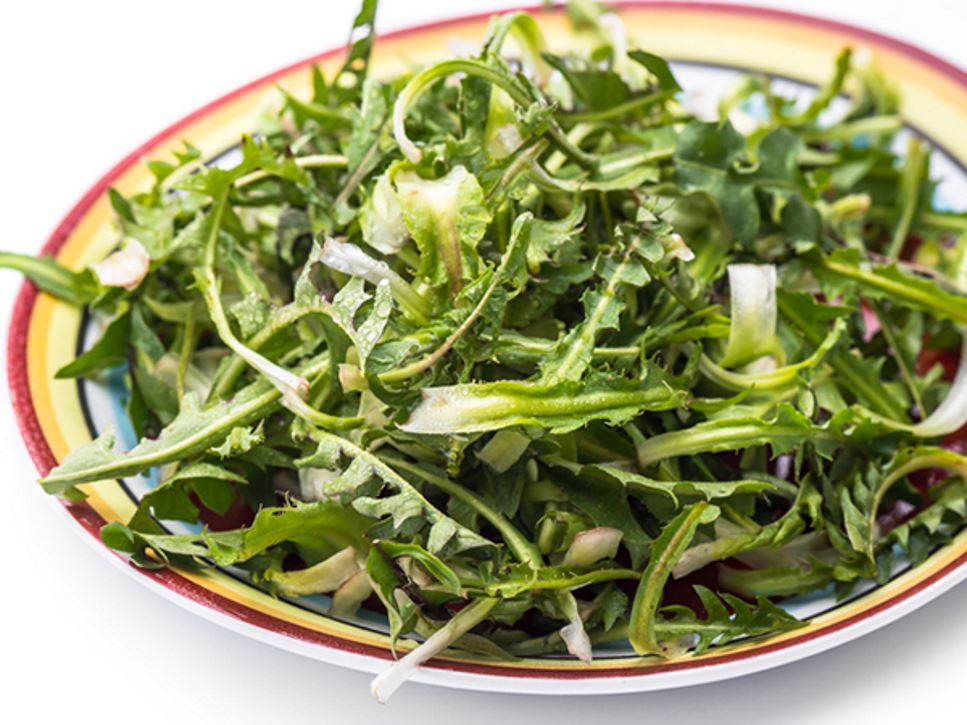Historically, wild greens, including dandelion, lambsquarters and nettle, have been consumed by various indigenous groups in America. While many Americans may have grown up thinking plants such as dandelions are simply weeds, recent years have seen these plants catch the attention of a larger audience of chefs and people looking to eat locally.
Wild greens might appear on restaurant menus and at farmers markets, and in recipes for main dishes, soups and sides — and for good reason. Edible wild greens are flavorful, low in calories and high in vitamins, plus other nutrients, depending on the type of plant.
Wild greens are also versatile — they taste great sautéed in olive oil and in soups and casseroles, and some can be tossed raw into salads and piled on sandwiches. It's best to experiment with small amounts initially until you find which recipes suit your taste preferences.
Even though edible greens often grow in the wild, it’s generally better to buy them from a reliable source, such as a supermarket or a farmers market. Picking them yourself can be dangerous, since plants that look similar may exist and be unsafe to eat. Plus, you don't want to risk eating a plant that has been treated with chemicals, which is often the case for dandelions and other wild greens that grow on their own in neighborhoods and parks.
These are a few edible wild greens and how you can include them in your eating plan.
Lambsquarters
Lambsquarters is related to spinach and often described as being similar to it. The leaves are considered bitter and become milder when cooked. One cup of cooked lambsquarters has 464 milligrams of calcium and is a rich source of vitamins A and K. It also packs in more than 500 milligrams of potassium and is an excellent source of vitamin C.
Dandelion
Enjoy the roots, leaves and even the flowers of this common green that's hated by lawn owners and loved by cooks. The leaves are commonly found in salad mixes, such as mesclun, and are described as having a slightly bitter taste. The roots can be added to salads or roasted and ground to make a coffee substitute. From a nutritional standpoint, 1 cup of cooked dandelion greens boasts almost 150 milligrams of calcium and is an excellent source of vitamins A, C and K.
Amaranth
The amaranth plant is more commonly known for its seeds, but its leaves are edible, too. The leaves taste slightly sweet and can be eaten raw or cooked. A cup of cooked amaranth leaves provides approximately 3 milligrams of iron, 275 milligrams of calcium, 850 milligrams of potassium and almost 3 grams of protein — for only 28 calories.
Nettles
Nettles, also known as "Stinging Nettles," can't be eaten raw, and you need to be careful when handling them. Using tongs or durable gloves is recommended, because the raw leaves can sting the skin. Once cooked, 1 cup of nettles boasts 6 grams of dietary fiber and close to 430 milligrams of calcium. It's a good source of magnesium and offers some iron and potassium as well.
Purslane
This super-hardy green grows almost anywhere from the garden to gravel and reproduces rather easily. While it is despised by many gardeners, purslane is actually a good source of vitamin A and potassium and has a little bit of several vitamins and minerals — including magnesium, calcium, folate and iron — all for only 21 calories per cup cooked. It’s known to impart a slightly tart or citrusy flavor, and the stems and leaves can be added to salads or slightly cooked and enjoyed as greens or in soups.
Sorrel
This perennial herb with leaves that look similar to spinach can taste sour due to its oxalic acid content. Young leaves, which have a milder flavor, can be used in salads and the older, larger leaves work best in soups and stews. Sorrel is high in vitamin A, and it also provides some magnesium, potassium and calcium.
As is the case with other dark green, leafy vegetables, wild greens can be high in vitamin K. If you're taking an anticoagulant medication (blood-thinning drug), eating consistent amounts of vitamin K is extremely important. Too much or too little can affect how your blood clots. Check with your doctor or registered dietitian nutritionist before making any changes in your diet if you are taking an anticoagulant medication.
Find a Nutrition Expert
Looking for credible nutrition information and recommendations? The Academy of Nutrition and Dietetics' network of credentialed food and nutrition practitioners are ready to help!

